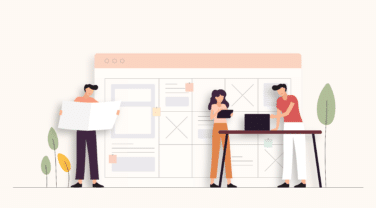Since the digital product experience has become ubiquitous in our lives, creating a memorable user journey has become incredibly important. But UX is not limited to the digital realm. It’s the end-to-end journey customers take with any product.
It’s not just cool features. A high-priced car might not have all the bells and whistles that a cheaper, more tricked-out option has, but the overall experience might be better. It might drive better, longer, and require less maintenance — all indicators of a superior, more shareable UX. So, product design requires more than cool add-ons; it requires taking a comprehensive look at something and ensuring that both the tangible and intangible experiences are top-notch — and that means what you’re spending on UX now probably isn’t enough.
We at Allata build digital products and strive to discover product design best practices that will help us tell a digital story for users. For us, UX means creating an engaging pathway through software that a user can easily maneuver and enjoy. What’s needed to get there? Well, that depends.
How to Determine the Level of Investment You Need
The goal of UX is to build a distinct, intuitive product that makes peoples’ day-to-day routines easier and more enjoyable, all while cultivating a sense of brand loyalty.
If you work for Craigslist, for example, UX investment isn’t critical because you’re simply trying to connect sellers and buyers within a marketplace. If you’re on a platform like Instagram, it’s way different. You want to build something so simple and so user-friendly that people can’t help but spend hours scrolling through their go-to feeds or snap photos of their favorite dishes, friends, loved ones, and everything else.
When UX is at its peak, this is how enthralled users should be connecting with a product. So, how do you know if you’re pouring absolutely everything you should be into UX? If you answer yes to the following questions, you may not be investing enough in user experience:
1. Will this product differentiate your business?
If so, designate someone to own finding those differentiators and illustrate how to highlight them to customers. A UX researcher is responsible for investigating every potential pain point that might disrupt the user. Researchers observe user behavior and pose potential UX options to test how they’d fare with particular audiences.
2. Does the product play a significant role in meeting and exceeding business objectives?
If the answer is yes, start with a Design Thinking approach that focuses on user research and a thorough understanding of user pain points. These insights allow the designer to build layouts and high-resolution screen designs based on user stories, personas, and the researcher’s findings. They can also work closely with other departments to ensure the user interface matches up with long-term business needs. While many companies try to design every screen at the start of a project, a better approach is to iterate design as requirements are clarified.
3. Is it easy for customers to switch to a competitor?
If users can switch to competing brands with the click of a mouse or tap on a screen, the need for an elevated experience becomes critical and can make all the difference between capturing and maintaining market share or losing it overnight. Designs must be brought to life. Enter the front-end developer, who can take designs and turn them into a real product. That’s the front-end role. Great FEDs take pride in making the real product live out the potential of the design with carefully programmed micro-interactions. These interactions can surprise and delight users. They create a sense of stickiness with customers. This require careful planning and a thoughtful UX approach.
4. Is the team member experience critical to the success of internal products?
Don’t go for the head fake and think that experience is less important for internal apps. A better UX leads to less training and support. It also leads to happier employees, with those good vibes flowing directly to customers. The ability to find information quickly is critical for internal staff. Organizations that understand this bring an information architect to the dance. This is the role responsible for structuring content. Take navigation, for example. The information architect will explore how the team can label and organize the information presented to users in an easy-to-follow and intuitive manner.
Customer expectations for products are only getting higher. Intuitive, easy-to-use apps have set a standard that customers and internal employees now expect from websites and other products they engage with daily. The UX bar is high, and more of an investment is needed to clear it.



